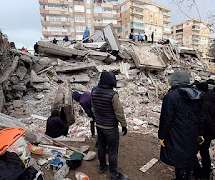Reflections on the Turkish-Syrian Earthquakes of 6th February 2023: Building Collapse and its Consequences
Emergency Planning
FEBRUARY 8, 2023
Many of the news media that have reported the disaster have presented it as the result of inescapable terrestrial forces. Natural Hazards and Earth System Sciences 15: 931-945. Natural Hazards 109: 161-200. A view on how to mitigate earthquake damages in Turkey from a civil engineering perspective.











Let's personalize your content